Cambio
Healthy Social Media
Senior Undergraduate Thesis - University of Utah
Systems Design, UX Design, UI Design, Psych Implementation
(spring 2019)
“Almost every night I cry myself to sleep scrolling through instagram and snapchat.” ... “Of course no one posts their failures or lows.” ... “It’s hard to take a break because it feels like I’m going to miss out on something.” ... “In reality, what am I doing? Scrolling and making myself miserable.” ... “I probably check my phone every 5 minutes looking to see if I’ve got more notifications - it doesn’t really happen.” ... “I force myself to wear cuter things because I think that’s what would make people on instagram like me more.” ... “It’s exhausting - the feeling that you will never be enough.” ... “My daily routine consists of waking up and checking my social media, then I do everything else.” ... “I’ve been struggling with loving myself for a while now...” ... “I didn’t understand why I wasn’t good enough to not get any likes or comments on my posts.” ... “It’s eating me alive.” ... “I’ve always struggled with my confidence, but the more I look at others, the worse it gets.” ...

Translated from Italian meaning “I change”, Cambio is an app that keeps your social channels the same, but helps change and focus your social interactions inward by removing the immediate channels for comparison.
Being an issue that is at the forefront of essentially all of our modern lives, social media is something that I have spent a considerable amount of time thinking about, writing about, and designing for, with the hope of highlighting the way that it affects every single person, no matter how involved they are day-to-day.
[ try the demo here ] - Best experienced on mobile.


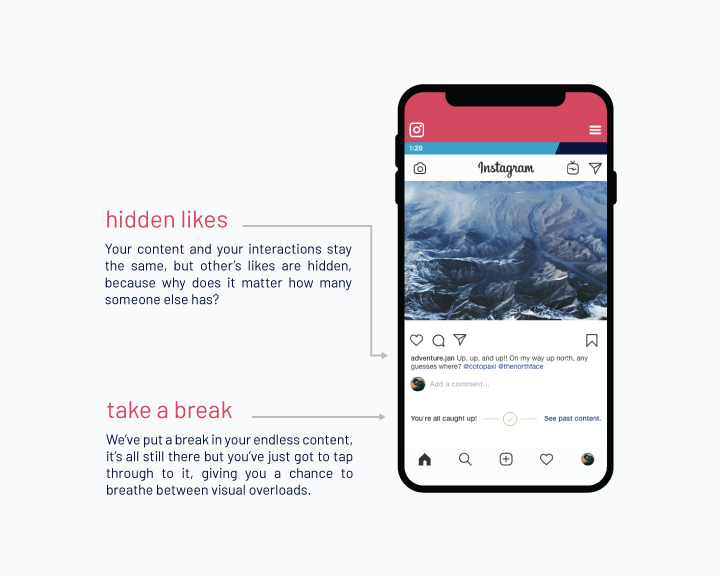
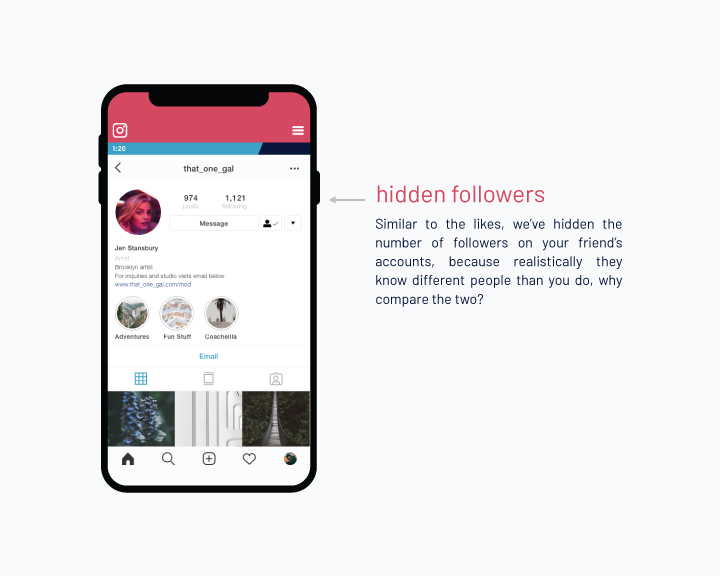
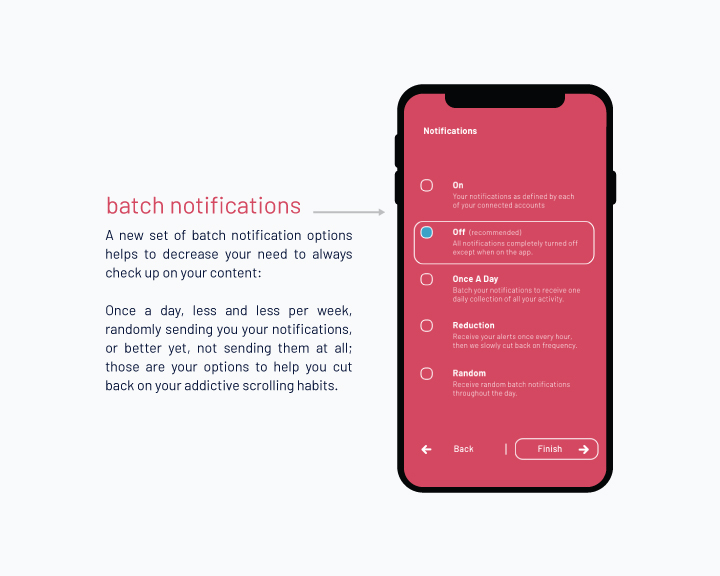

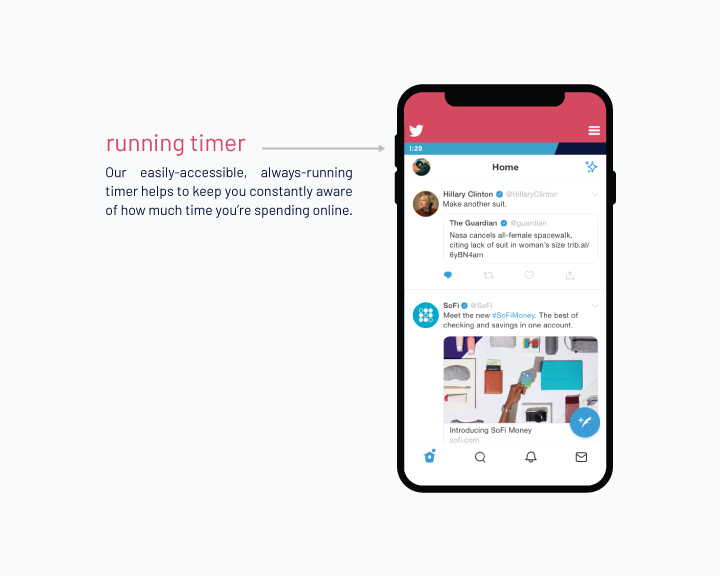

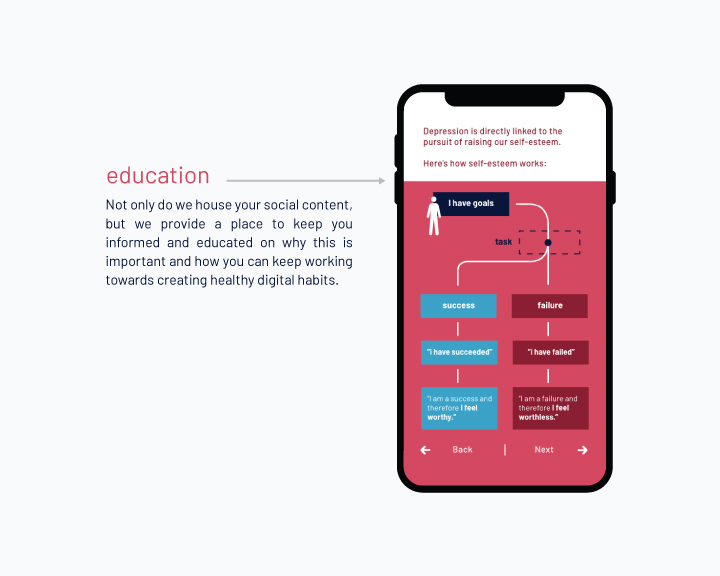
The problem.
In the United States alone, 81% of American adults are estimated to own smartphones, but more and more children and teens are ceceiving smartphones every year, even as young as 8 years old. From my research following Common Sense Media–a grouup tracking media use among children and teens since the early 2000’s–53% of children in the United States now own a smartphone by age 11, and 84% of teenages have their own device.
These numbers have been steadily increasing every year due to the changing social and economic landscape, and it’s not going to slow any time soon. This is the next generation of users, but one that’s more easily succeptible to their changing landscape. This can be a wonderful thing, but it’s also showing signs of major issues beginning to arise.

It’s a fairly well known fact that many people suffer from depression, an issue with many faces, many names, and–most importantly–many diverse causes. It’s not one that’s easy to pin down.
But depression rates in teens ages 12-17 have risen 63% since 2013. And since 2012, suicide rates among the same age group have gone up 31%.
One way or another, this can’t continue to happen; these rates can’t be allowed to continue to rise. The most frustrating part of this, however, is we cannot and will not ever be able to pinpoint one specific cause. It’s just not possible.
So what could be the cause?
The rise of social media.
Much of the scientific community blames these dramatic changes in the population’s mental and emotional health on the rise of social media–despite the lack of direct evidence or proof*.
The ever growing number of different platforms and resources which have become available since the creation of the internet have done nothing but overwhelm the population with ways to connect and share. We now have the chance to share things remotely and in no time at all, things that would have originally taken far longer.
*Side note: I’ve gone far more in-depth on this issue, since finishing my senior undergrad thesis, in my Masters dissertation titled, The Burden of Proof. Check it out [ here. ]

A timeline of the birth and rise of the major modern social media platforms.
Impact on teens today.
Below are quotes from teens regarding social media and their mental health, they’re fully aware of the problem at hand.
“It’s hard to take a break because it feels like I’m going to miss out on something.”
“I’ve always struggled with my confidence, but the more I look at others, the worse it gets. Almost every night I cry myself to sleep, scrolling through Instagram and Snapchat.
“It’s exhausting–the feeling that you will never be enough.”
These are quotes from teens I spoke to in 2018 and 2019, all who wanted to remain anonymous, but all expressing the same concerns. These aren’t the first i’ve heard, and I’m sure they won’t be the last. One way or another, we’ve got a big problem on our hands.
Addiction vs. self-esteem.
Addictive app design is a widely discussed topic within the design community and is often the scapegoat for why teens are feeling as depressed as they are. Even though this is a big issue, and does play a key role in keeping teens active on social media, we can’t truly understand the problem until we take a step back and ask why people are on social media in the first place;
ironically, to feel better about themselves and grow their self-esteem.
The addiction process.
In both substance addictions and behavioral addictions, which function essentially the same way, our actions change from learning and exploring to an expected and habit-based response, which isn’t a good thing.
The addiction process always follows a predictable pattern: use/action, experienced high or rush, increased stress because you don’t have the thing anymore, and eventual withdrawal from the substance or behavior. Our emotions are directly affected by this process and are physical reactions to these external actions or events. Unfortunately, each time we do these things, the excitement dulls, and requires increased use to receive the same rush as before, meaning, the less you do these things, the more difficult it becomes.

The addiction process
The pursuit of self-esteem.
While self-esteem itself is a very important aspect of our growth as healthy human beings, it’s in the pursuit of our unconsciously created self-esteem goals that we can fall into unhealthy habits and pitfalls; trying to define what our worth is to the people around us. It all depends on why we act in the first place.
For example, while in school you learn about new and interesting things, but why are you paying attention? Are you learning to get a good grade and have that validation that you’re smart? Or are you learning so that you can grow your knowledge and, in turn, grow as a person?

The process of growing self-esteem
How to shift perspectives.
Self-esteem is the underlying goal that drives any behavior. Success or failure in these self-assigned areas is where our self-esteem is derived. So, if our happiness is based upon whether we succeed or fail, we need to be sure that we view the things we’re doing in the right frame of mind.
to clarify:
making the change from pursuing self-validation to pursuing personal growth is shown to be the key to keeping yourself satisfied as you move through life.
If we know that shifting perspectives is the key to a healthy self-esteem, how does that work in a digital space? How does the current space need to change, and how do our own actions need to change? Why are we posting, and who are we posting for?
In order to completely understand what that shifted behavior or mindset needs to look like, we need to fully understand the current landscape as it exists.

Identifying problem areas.
Diagramming popular social media platforms through the lens of mental health helped to reveal key insights as to why people aren’t always happy on social media. I explored and diagrammed out the entire user flows for Instagram, Snapchat, and Twitter, mapping the interactions and potential areas that would perpetuate unhealthy habits. Through my diagrams, I sorted these problem areas into 3 main categories:
quantifiable results
i.e. likes, comments, followers
endless content
i.e. infinite scroll, pushed/suggested content
comparison zones
where primary focus is on other’s content and metrics
Case study:
Instagram
After working through all 3 social platforms, I decided Instagram would be the perfect platform to illustrate many of these large issues surrounding social media platforms as a whole.
In my diagram below, each box represents a clickable link within Instagram–anything that you as the user can click on. The pink boxes are representing comparison zones, or areas where a user is able to compare themselves to another user. That could be through likes, number of followers, number of views, or comments, or any other indicator that may be introduced that facilitates the same ability.
As you can see, these comparison zones are all over the platform, and every one is accessible within two touches of the home screen. That’s a lot of places to question your self worth...

Interaction map of every clickable link in Instagram (April 2019)
When these statistics are readily available to us, it becomes easy to focus on what they mean for you in your personal life. This could easily lead you to devote all your efforts to satisfying those perceived social standards, rather than spending your time using the platform for it’s original intended purpose–to share content and create conversation.
So if these additional elements could be directly connected to the majority of the issues with mental health, why do we keep them? That question was the driving force behind Cambio.
Cambio
Healthy Social Media.
Translated from Italian meaning “I change”, Cambio keeps your social channels the same, but helps change and focus your social interactions inward by removing the immediate channels for comparison.
Cambio in use
Onboarding, education, and notification management
Why switch?
We’ve outlined a lot of problems with social media, but what would be the benefits to using Cambio and staying on social media? We’ve categorized the benefits into 4 different categories:

The original purpose of social media was to share ideas and create conversation, let’s work our way back to that.
Cambio began as a deep dive into a rabbit hole I’ve been consumed by for the last three years, not only having seen these issues firsthand in the lives of the people around me, but in my own life as well. I want this project to show people that we can find a common ground between financial success, and healthy users and customers.
Cambio as an industry tool.
Clearly, a project like Cambio will need a way to continue to thrive in the space, but Cambio could be easily used as a tool for any major social platform looking to find new important insights regarding their user’s habits, interactions, and experiences.
By licensing Cambio and monitoring side-by-side how users move through each app–in this new filtered fashion–and utilizing it as a research tool to truly understand their users, Cambio can inspire platforms to push new updates to their respective platforms, to see how their users are being directly affected by specific updates, both on the flagship platform, and on Cambio as well. These two independent, but also parallel, experiences will do nothing but help generate healthy insight, but be sure no financial progress is lost.
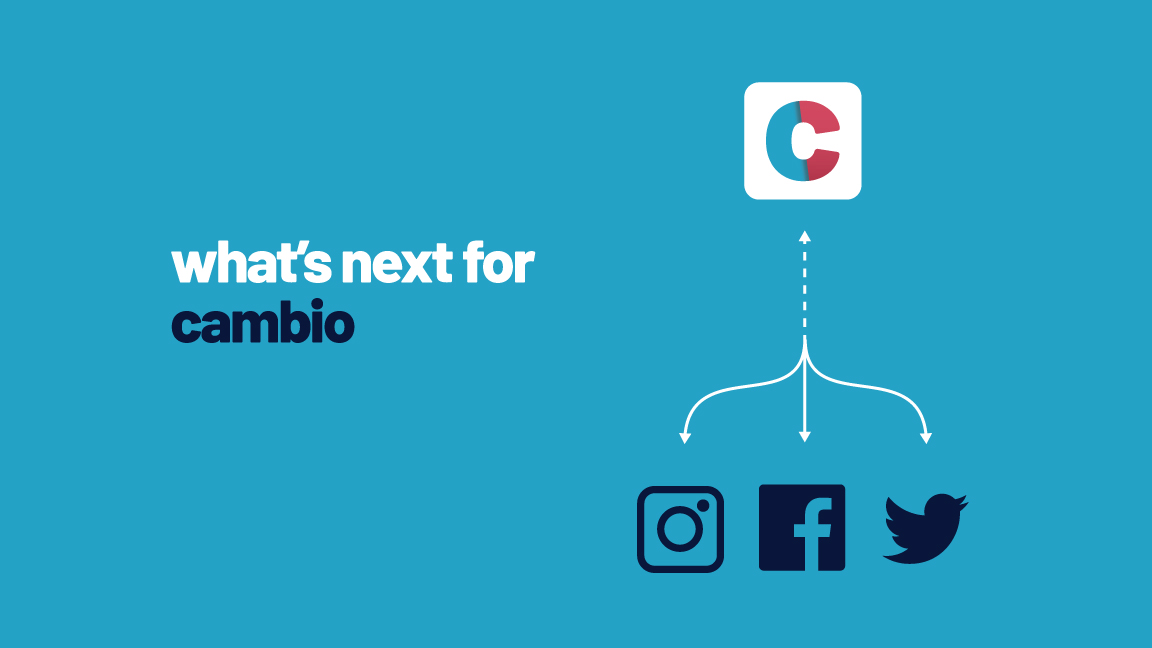
Long term, the only acceptable goal is not only happy, but healthy users. Luckily, Cambio can be a catalyst for this transition.
...
Updates:
Ideally, social platforms like Instagram, Facebook, or Twitter would design with the mental health aspect of it’s users in mind, but no one has found a solution that can accomodate for that, as well as stay profitable. Cambio hopefully will be the start towards a union of those two concepts, and a conversation starter surrounding this issue.
Only as of recently are we finally seeing social platforms taking steps toward making their experiences more mental health friendly for their users, a huge step in the right direction. It’s not perfect, but it’s progress. Additionally, designers and advocates outside these tech-giants are bringing this issue to the forefront of public conversation, like the recent popular Netflix documentary The Social Dilemma born from industry experts at The Center for Humane Technology, are making big steps in assuring that we’re all educated.
I’m hoping to help push that even further, not only through this project, but as I continue my research at the Royal College of art. As previously mentioned, my master’s dissertation, titled The Burden of Proof, goes much more in-depth into this issue, and how it is that digital designers can begin making steps in the right direction.
Check it out [ here. ]
Note:
If you’re interested in this project, please reach out, but if you’re interested and want to help me build it, please reach out sooner rather than later. My email is on the left.